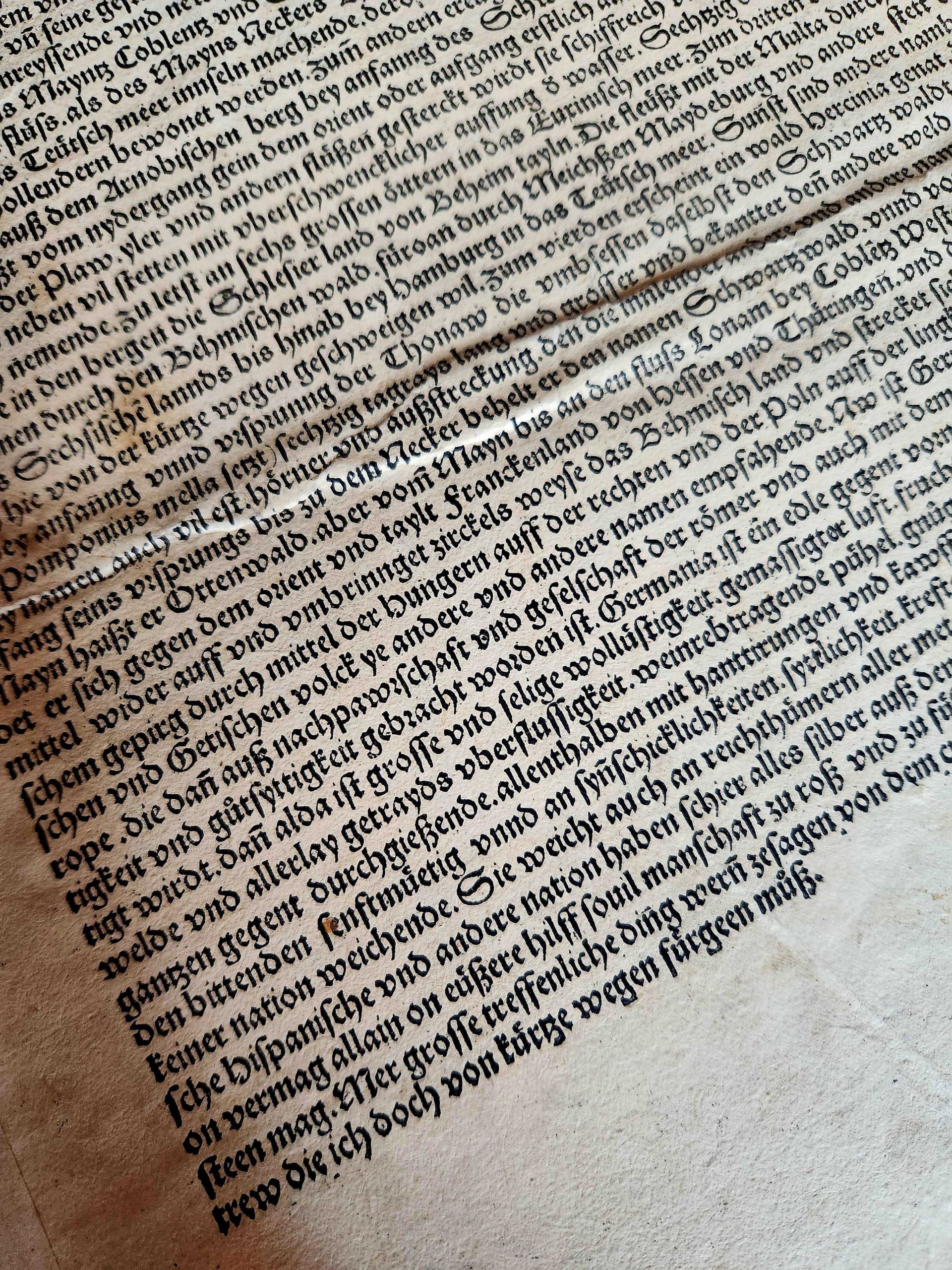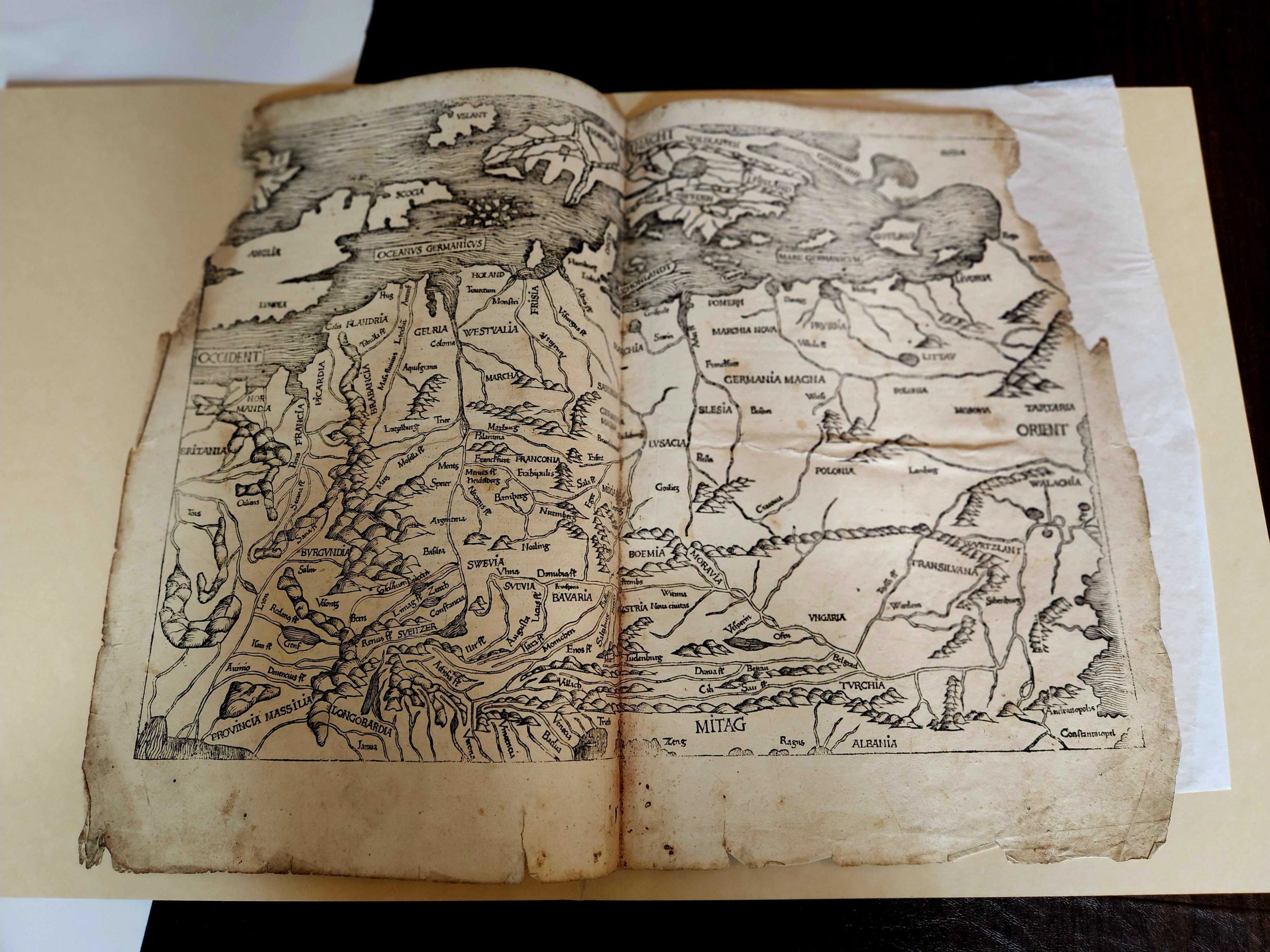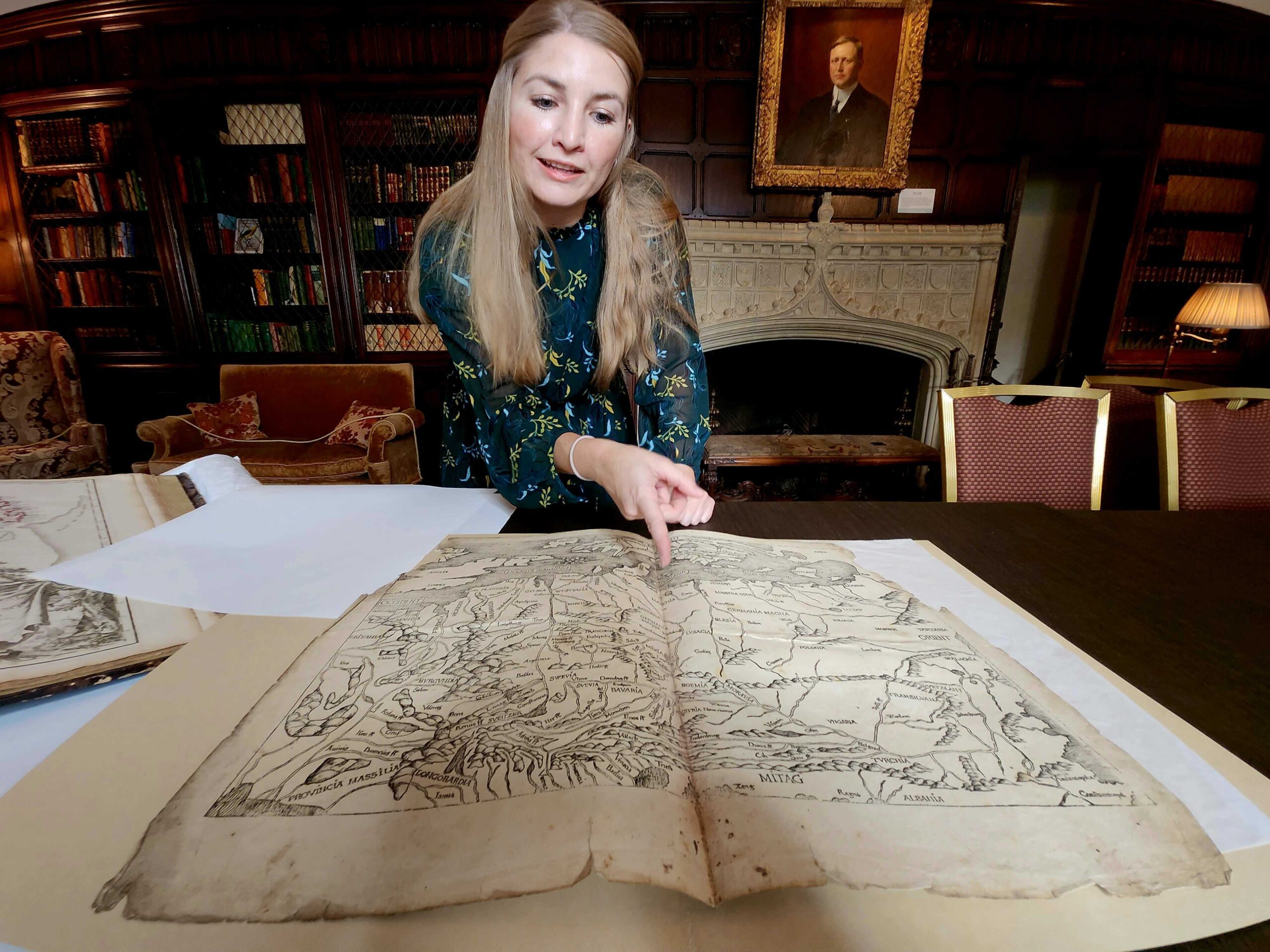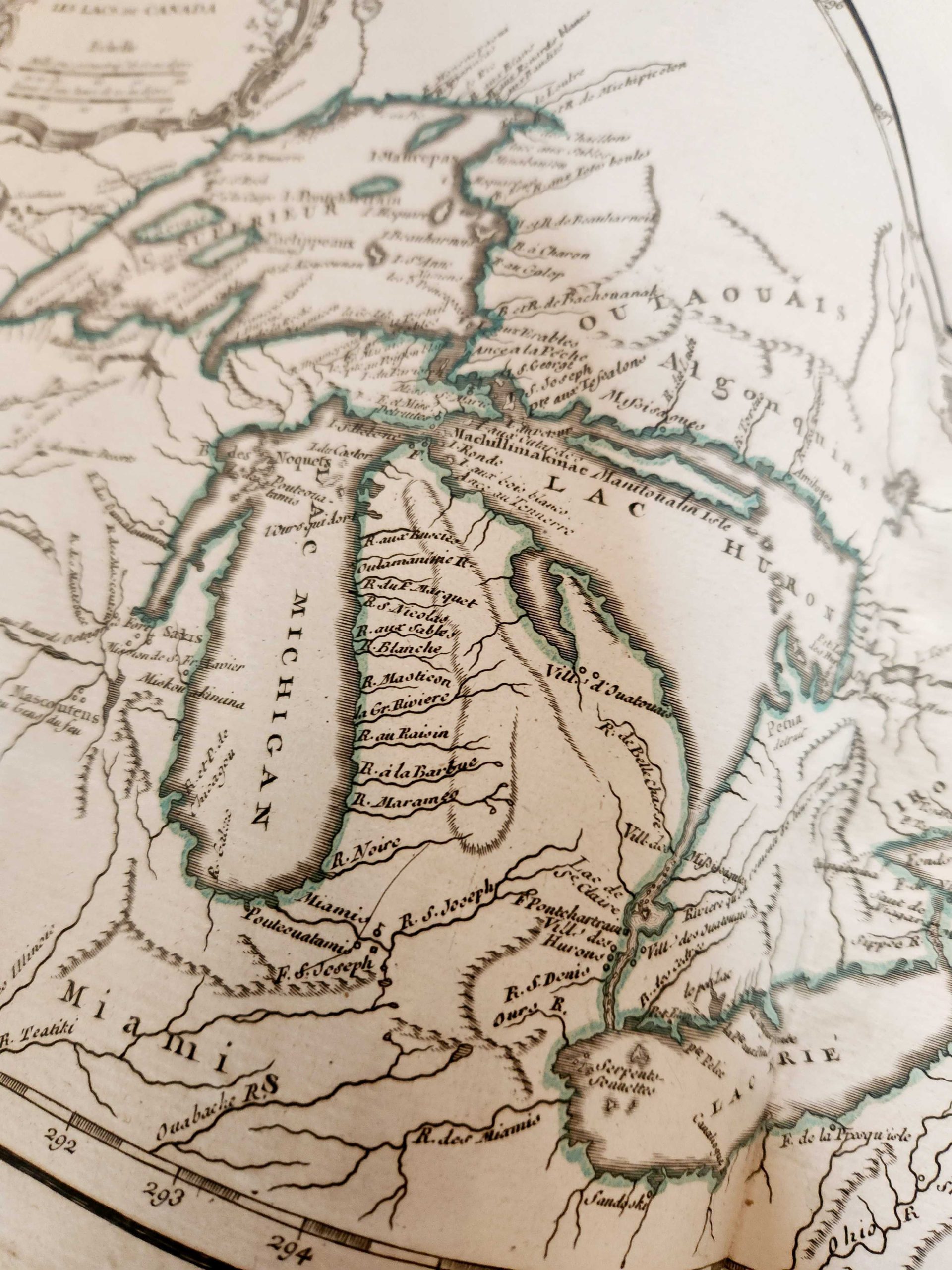Fifty years after being locked in a vault, a new – but very old – book-sparks interest – and a surprise discovery – at Meadow Brook. In the Dodge and Wilson family’s collection of more than 1,600 books, the Atlas Universel is the oldest one dating back to around 1788.
 Yet just discovered within its pages was something even more rare.
Yet just discovered within its pages was something even more rare.
The Atlas Universel was considered the most important atlas of the 18th century. Each atlas was a collection of separate folios put together by prominent collectors and only about 400 copies were ever made.
Meadow Brook’s Atlas Universel is the Didier Robert de Vaugondy and C. F. Delamarche version published around 1788. Because of its great value, Meadow Brook’s copy was placed in the vault about fifty years ago, when the estate first became a historic house museum. As a result, it has never been fully researched, until now.
Watch Meadow Brook Curator Madelyn Chrapla tell the story and read on for more below!
View this post on Instagram
The Atlas Universel
In 2022, Meadow Brook Curator Madelyn Chrapla pulled the Atlas Universel from the estate’s vault and began to research and examine it. She believes the book was purchased by Matilda Dodge Wilson on a family trip to France in the early 1920s.
Records of the Dodge family book collection don’t show an account for the Atlas until it was added to a catalog from 1921, handwritten at the bottom of the list. Matilda wanted to create a library at Meadow Brook Hall that would be full of interesting, enjoyable and historical books – and the Atlas Universel fits all the descriptions.
The Atlas Universel has sturdy paper for a book from the 18th century. Despite its age, it can be handled with clean hands, which allow for greater precision and care instead of white gloves that could get caught on the pages, possibly damaging the book.
The 18th century was a time where humanity was exploring the world and maps were just beginning to be printed and shared with the (usually wealthy) public.
Each map in Meadow Brook’s atlas has hand-painted borders. Early cartographers, or map makers, had to work with limited knowledge and technology, as reflected in the inaccurate depictions of Michigan, North America and Canada.
This map even notes the Indigenous groups of the area and the languages they spoke, which was unique for a map of the era.
An incredible discovery
 As Chrapla methodically reviewed the atlas’ pages, she made an incredible discovery nestled between maps of 18th century Germany. It was an incredibly rare folio from the German edition of the 1493 Liber Chronicarum, known as the Nuremberg Chronicle.
As Chrapla methodically reviewed the atlas’ pages, she made an incredible discovery nestled between maps of 18th century Germany. It was an incredibly rare folio from the German edition of the 1493 Liber Chronicarum, known as the Nuremberg Chronicle.
Chrapla knew she had found something quite special and rare and took the find to experts at Oakland University to learn more.
She received help from Emily D. Spunaugle, Assistant Professor and Rare Books Librarian at Kresge Library, and Dr. Megan Peiser, Assistant Professor of Eighteenth-Century Literature, Department of English. Next, they contacted Dr. Corinna Norrick-Rühl, a German colleague to decipher the German script, and Dr. Christoph Reske, one of the foremost scholars of the Nuremberg Chronicle at the University of Mainz.
 Together, the team discovered the folio was owned by Urs Gibelin (1586-1654), as noted by the family crest and a handwritten inscription on the back of the folio. Gibelin was a captain in the French service and a prominent citizen of Solothurn, located in present-day Switzerland.
Together, the team discovered the folio was owned by Urs Gibelin (1586-1654), as noted by the family crest and a handwritten inscription on the back of the folio. Gibelin was a captain in the French service and a prominent citizen of Solothurn, located in present-day Switzerland.
The folio depicts swaths of Europe and Asia. Someone, most likely Gibelin himself, made hand drawn edits to the map. His commentary shows Solothurn’s political enemy, Lucerne, crossed out and replaced with “Solothurn,” and the river that would run through Solothurn was drawn in.
The city of Bern was moved to be written in on the coast of Russia. The ink on Bern was newly written and still wet when the folio was closed, because a mirrored transfer of the script can be seen on the opposite page of the folio. Political edits like these are extremely rare on maps.
Enriching Meadow Brook’s Collection
The Nuremberg Chronicle was the first time text, pictures, and maps were all printed in one book and editions surviving to today are extremely unique.
For more stories of the people and places behind the estate, visit the History at The Hall storytelling series.



